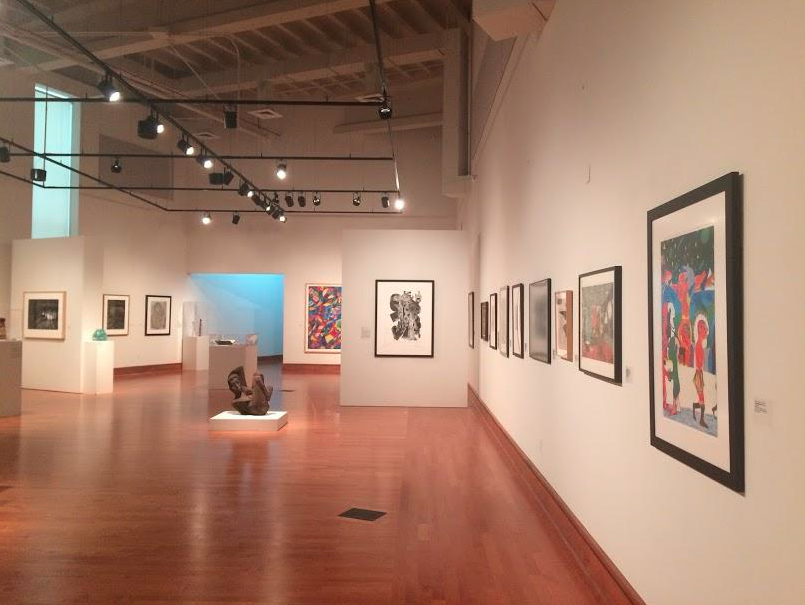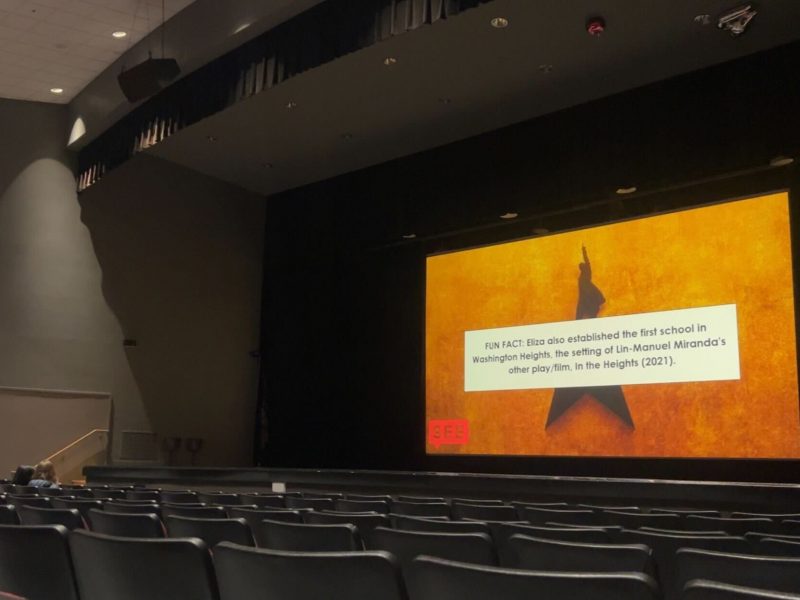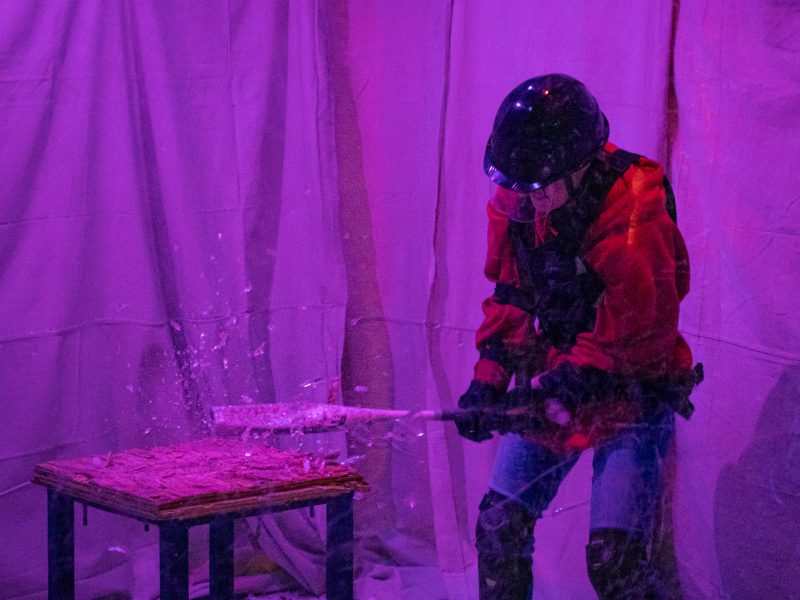Kevin Cole’s “Jacob’s Ladder Do Lord Remember Me II” sculpture hangs from the ceiling of this university’s David C. Driskell Center, as part of its “The Last Ten Years: In Focus” exhibit, a commemoration of the center’s history in their current space.
The 2010 mixed-media piece is more than 8 feet tall. The seemingly abstract elements make up several neckties and a ladder. Cole’s grandfather walked him through a park in his hometown of Atlanta, pointing out a tree where black men were lynched in their efforts to vote. The piece hangs from a rope.
It’s the favorite of Dorit Yaron, the deputy director of the center; she assisted in the curation of the exhibit, along with Executive Director Curlee R. Holton, archivist Stephanie Smith and Kevin McDonald, a graduate assistant.
“There definitely has been more inclusion of African-American art in the story of American art, not necessarily the full story,” she said.
Ten years ago, the center worked out of offices and had about 100 pieces. They moved to their current location, in Cole Field House, when the main pool moved to the Eppley Recreation Center. The new space allowed for a gallery, vault and archives. The art was stored away during renovation, so many of this exhibit’s pieces have never been seen.
“I was amazed at how much the collection grew, what wonderful pieces we have and how broad it is in regard to materials,” Yaron said.
The facility now has more than 1,700 pieces and is the leading research center for African-American art, according to its website.
The exhibit features a large scope of African-American art, from legendary artists such as Romare Bearden and Gordon Parks, to emerging ones. There is a mixture of mediums, including sculptures, paintings, photographs and drawings. One piece dates back to 1885.
“As an African-American, I’m seeing my history and how my peers express their art now,” said freshman public health science major Denise Agyeman, who is also an employee at the center. “Each piece is meaningful and is still impactful.”
Archivist Stephanie Smith, who has worked at the center for four and a half years, said the center has “really defined our mission more and figured out ways to better fulfill it.”
Last year, the center added the Faith Ringgold Study Room: a collection of her artwork, letters, drafts of her children’s books and more. This prompted teachers from Prince George’s County Public Schools to bring their students to interact with the art and apply it to a variety of subjects.
“I want [visitors] to take away the knowledge that we’re here and we’re available,” Smith said.
The exhibit is unique in that documents from the center’s Driskell Papers archives are displayed in conjunction with the art.
“We really thought it was important to have that archive aspect, because I know that the archives kind of get hidden because it’s not quite as on display as the art,” Smith said.
David C. Driskell is a former professor at this university, as well as an artist, curator, collector and historian. Included are journal entries from Driskell himself, a congenial letter to the artist from Romare Bearden, and a letter addressed to White House art curator Rex Scouten, who served under Bill Clinton and called on Driskell to select an art piece.
His selection — by Henry O’ Tanner, “Sand Dunes at Sunset, Atlantic City” — was the first piece by a black artist in the White House’s permanent collection.
“We always pick and choose, so it’s really important to tell the full story showing the early works, not only contemporary, so people understand that African-American art was always here, but African-American artists didn’t always have a place to show it,” Yaron said.



